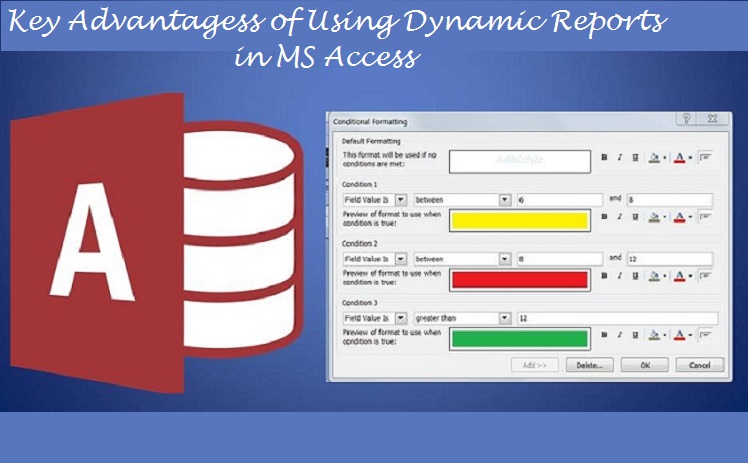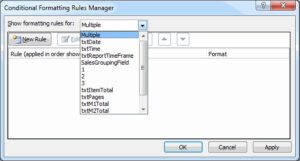Here we explain you basics if Dynamic Reports in MS Access, and its 3 key advantages.
Dynamic reports in MS Access are undoubtedly the best option of report to choose from. It is interactive and a perfect combination of the live and the static reports available in MS Access. One of the main reasons for the growing popularity of Dynamic report is the fact that it allows for easy sharing ability of static reports, along with providing the user with the accuracy similar to a live report. A dynamic report is more often nothing but a graphic display that provides a combination of the basic elements of other report options available.
The Dynamic reports that MS Access allows for are created during runtime, whenever these reports are run, the most recent data is gathered in Data Warehouse. The report definition that does not change is stored. The Dynamic reporting feature in MS Access works quite differently as compared to other options, and once you understand how to operate it, you might want to change your way of using reports altogether. The ReportView feature that was introduced in the 2007 edition of MS Access, made reports Dynamic, thus allowing users to hyperlink text, attach controls, and more. Given below are the three greatest advantages of using these reports.
Conditional Formatting

Hyperlinking
Hyperlinking within the reports is one of the greatest and the most appreciated feature of the Dynamic reports. For all users looking for greater amount of information than what is given in the reports, hyperlinks help a great deal. When you are hyperlinking text in the reports, you can redirect them either to a sub form or to an external source. Hyperlinking within reports has helped users a great deal in making their reports a lot more informative and comprehensive. Often if a user comes across a lengthy and complicated report, they get intimidated by it. However, by making use of hyperlinks, you can give them lots of information, without causing any intimidation.
Neat User Interface
The templates that are available for the dynamic reports in Microsoft are extremely neat. Depending on the kind of template you choose, you get access to certain features. These samples make use of embedded macros and not VBA, and still provide user with the kind of interface that they would love to work on. You can also make use of template that hyperlink the tasks by default to Access forms. Or other templates that allow you to generate your own hyperlinks.
All data stored in your Access database remains vulnerable to a database crash. Hence companies must invest in a tool to deal with corrupt accdb database files.
Author Introduction:
Vivian Stevens is a data recovery expert in DataNumen, Inc., which is the world leader in data recovery technologies, including sql repair and excel recovery software products. For more information visit www.datanumen.com